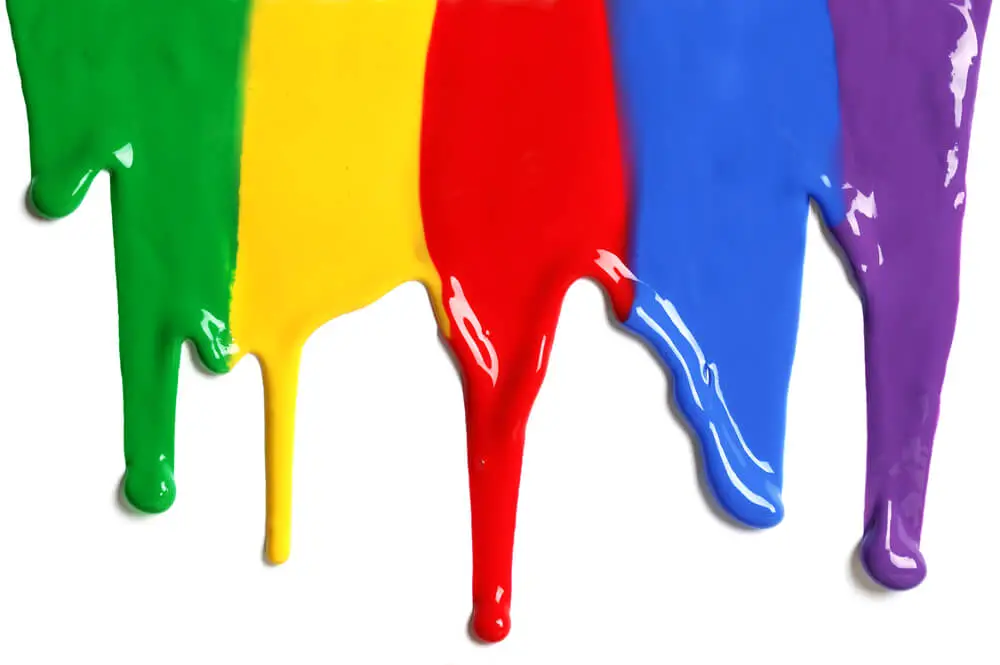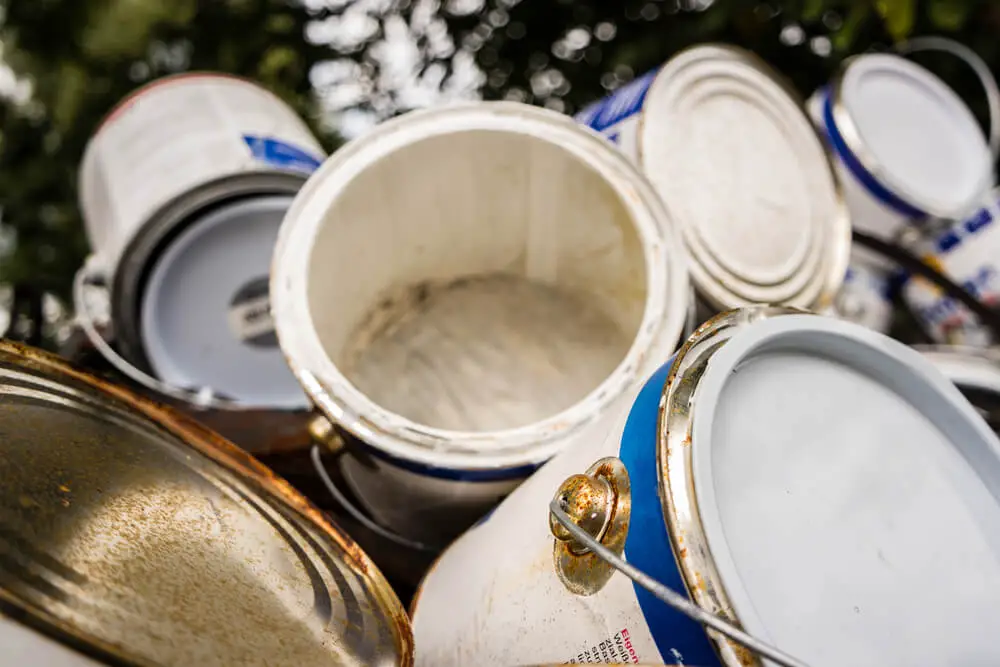Painting your home or workspace can be a rewarding endeavor, but choosing the right type of paint for your project is essential. Latex and oil-based paints have different properties that make them suitable for specific applications and surfaces. As such, knowing how to tell the difference between latex and oil paint will ensure the success of your paint job.
Latex paint is a water-based paint made from acrylic or vinyl polymers, making it easy to clean with soap and water. It dries quickly, has strong adhesion and is more environmentally friendly than oil-based paints. On the other hand, oil-based paint, also known as alkyd paint, is made from a mixture of oils and resins that provide a durable finish, which is often used on surfaces such as wood, metal, and floors.
To avoid any potential complications, it is crucial to understand the existing paint type on the surface you plan to repaint. Mixing paint types can lead to poor adhesion and an unsightly finish. In the following paragraphs, we will discuss simple methods to determine whether the existing paint is latex or oil-based, making your painting project seamless and successful.
Identifying Paint Types
When determining whether paint is latex or oil-based, there are a few methods you can use. Here, we’ll discuss three common tests: the Alcohol Test, the Touch and Appearance test, and examining Peeling and Chipping.
Alcohol Test
One effective way to determine the type of paint is by using rubbing alcohol. To perform the alcohol test:
- Moisten a cotton ball with rubbing alcohol.
- Rub the cotton ball on a hidden area of the painted surface.
- Observe the results:
- Latex paint: The paint will transfer to the cotton ball.
- Oil-based paint: The paint will not transfer, and the surface may appear slightly softened.
Touch and Appearance
Another method to identify paint types is by observing the touch and appearance of the painted surface.
- Latex paint: It usually feels smooth and has a consistent sheen. The sheen can vary from matte to glossy.
- Oil-based paint: It typically feels slick and has a higher sheen, often appearing as enamel or glossy finish.
Peeling and Chipping
Examining the peeling and chipping patterns can also provide clues about the paint type.
- Latex paint: Peeling usually occurs in large sheets or strips, and the edges may appear slightly curled.
- Oil-based paint: Chipping occurs in small, rigid fragments, and peeling may not occur in large sheets.
Remember, it’s essential to test the paint in a discreet section of the surface to avoid causing visible damage. By using these methods, you can confidently identify whether the paint is latex or oil-based and make informed decisions for future painting projects.

Differences Between Oil and Latex Paints
Composition
Oil-based paints are made from natural oils, such as linseed oil, while latex paints are water-based and made from a mixture of water, acrylic, and vinyl binders. The binders in oil paint create a strong bond between the paint and the surface, whereas latex paint relies on a combination of water-based components and solid acrylic particles.
Drying Time
Oil-based paints take longer to dry than latex paints. This is because oil-based paints require a longer time to cure as the oil needs to oxidize and harden. Latex paint, on the other hand, dries relatively quickly as the water in its composition evaporates, leaving behind the solid acrylic particles to form a durable surface.
Adhesion and Durability
Adhesion: Oil-based paint typically adheres better to surfaces and is less likely to peel or chip over time. However, latex paint also provides good adhesion, particularly on surfaces that have been properly prepared and primed.
Durability: Oil-based paints are known for their durability, which can make them ideal for high-traffic areas and surfaces that need to withstand wear and tear. Latex paint is also durable, but may be more susceptible to damage from UV rays and environmental factors.
Volatile Organic Compounds
Volatile organic compounds (VOCs) are a concern when it comes to paint, as they can cause air pollution and health issues. Oil-based paints often have higher levels of VOCs, while latex paints contain fewer VOCs and are considered more environmentally friendly. Additionally, low-VOC and zero-VOC latex paint options are available for those looking to minimize their impact on indoor air quality.

Application and Uses
Surface Preparation
Before applying either latex or oil-based paint, surface preparation is crucial. This ensures better adhesion and longevity of the paint job. Clean the walls, trim, doors, and other surfaces that will be painted. Remove dust, dirt, and grease, then allow surfaces to dry completely. In the case of stained wood, sanding may be required to remove tannins and create a smoother surface for paint adhesion.
Priming
Priming is an essential step when painting, regardless of whether you are using latex or oil-based paints. A high-quality primer will seal the surface, providing a consistent base and promoting better adhesion of the topcoat. For most walls and trim, a latex-based primer is suitable. However, for stained wood, an oil-based primer is recommended due to its ability to block tannins from bleeding through.
Primer Recommendations:
- Latex-based primer: For most walls and trim
- Oil-based primer: For stained wood and surfaces that require tannin blocking
Painting Techniques
When painting with latex or oil-based paints, different techniques can affect the final result:
- Rollers: Use a roller for larger surfaces like walls. It provides good coverage and a smooth finish. Select the appropriate nap length of the roller based on the surface texture.
- Brushes: Choose a high-quality brush for detailed work and cutting in, such as trim and doors. Synthetic bristle brushes are recommended for latex paints, while natural bristle brushes work best with oil-based paints. To avoid visible brush strokes, apply multiple thin coats, allowing each coat to dry thoroughly before applying the next one.
- Spray guns: For a faster and more uniform finish, especially on large, flat surfaces, consider using a spray gun. It’s essential to follow the paint manufacturer’s guidelines for using the proper spray gun settings, thinning the paint, and applying the correct number of coats.
In conclusion, the key to a successful paint job, whether using latex or oil-based paints, lies in proper surface preparation, priming, and attention to application techniques.
Deciding on the Right Paint for Your Project

Advantages and Disadvantages
Oil-Based Paints have some notable advantages:
- Durability: They are known for their resistance to scratches and general wear.
- Smooth finish: They provide an even, glossy finish, particularly on surfaces prone to heavy use, such as cabinets.
However, they also have some downsides:
- Longer drying time: Oil-based paints dry slower than latex-based paints.
- Strong odor: They have a strong smell, which may be an issue for indoor projects.
- Cleanup: Brushes and tools require solvents like denatured alcohol for cleanup.
Latex-Based Paints, on the other hand, have the following advantages:
- Fast drying time: They dry quickly, allowing for short waiting periods between coats.
- Low odor: They generally have a mild smell, suitable for use in enclosed spaces.
- Water cleanup: They easily clean up with soap and water.
But be aware of these disadvantages:
- Less resistant: Latex-based paints may not be as resistant to scratches as oil-based paints.
- Less smooth finish: The finish may not be as even and glossy as oil-based paints, especially on cabinets.
Considerations for Specific Surfaces
When deciding between oil and latex paint for different surfaces, keep the following recommendations in mind:
- Cabinets: Oil-based paints are often preferred for cabinets due to their smooth finish and resistance to wear. However, if low odor and easy cleanup are priorities, consider using a high-quality latex-based paint specifically designed for cabinets.
- Walls and ceilings: Latex-based paints are typically more popular for walls and ceilings, as they offer a cleaner, low odor option, and the finish is generally sufficient for these areas.
- Furniture: Both oil and latex paint can be used effectively on furniture, but oil-based paint offers a more durable finish, while latex provides an easier application and cleanup process.
Cleanup and Disposal
Cleaning up after a painting project depends on the type of paint used: latex or oil-based. Typically, latex paint can be easily cleaned up using warm water and soap, whereas oil-based paint requires mineral spirits for proper cleanup.
For latex paint, simply wash brushes, rollers, and other painting equipment with warm, soapy water. Rinse thoroughly and let them air-dry. If there is paint residue on surfaces like floors, trim, or countertops, use a damp cloth or sponge to remove it, again using warm, soapy water.
Oil-based paint, on the other hand, requires more care during cleanup. When washing brushes, use mineral spirits or paint thinner in a well-ventilated area, working the solvent into the brush bristles to remove the paint. Once the brushes are clean, rinse them with warm, soapy water. Repeat the process with rollers and other painting tools, using mineral spirits to break down the oil-based paint.
Keep in mind that mineral spirits and oil-based paint are both considered toxic. Dispose of them properly to avoid harm to the environment and public health. Many local waste disposal facilities accept oil-based paint and mineral spirits for disposal. Make sure to follow the facility’s guidelines regarding the amount, container type, and proper sealing. Never pour toxic materials down the drain or into the soil.
Lastly, unopened or unused paint, whether latex or oil-based, can often be donated to local non-profit organizations or recycling centers. This option is both environmentally friendly and aids community projects.

Repainting Considerations
Proper Techniques
When repainting a surface, it’s essential to determine whether the existing paint is oil-based or latex before starting. The difference between oil and latex paint affects how the new layer adheres and whether additional preparation is required.
Latex paint can adhere to oil-based paint if proper surface preparation is done. It would help if you considered sanding the surface thoroughly, which will remove any glossy finish and create a better surface for bonding. After sanding, a bonding primer, such as an oil-based primer, should be applied to ensure a long-lasting paint job.
For oil-based paint over latex, consider applying a separate oil-based primer before adding the new layer. This will help prevent chipping and improve overall durability.
Choosing Compatible Paints
When repainting, it’s crucial to select paint that complements the existing paint type. Mixing latex and oil-based paints can cause compatibility issues, leading to poor adhesion and a less durable finish. Here are some points to keep in mind:
- Latex paint over latex: No issues, as long as the surface is clean and well-prepared.
- Latex paint over oil-based paint: Sand the surface and apply a bonding primer, such as an oil-based primer, before painting.
- Oil-based paint over latex: It’s best to apply an oil-based primer first to ensure proper adhesion and prevent chipping.
Remember, taking the time to understand the existing paint type and proper repainting techniques will result in a more successful, long-lasting paint job.
Frequently Asked Questions
What is the best method to distinguish between latex and oil-based paint?
To distinguish between latex and oil-based paint, apply a small amount of rubbing alcohol on a white cloth and gently rub it on the paint surface. If the paint comes off on the cloth, it is latex. If it doesn’t, it is oil-based.
How can rubbing alcohol help in detecting the type of paint?
Rubbing alcohol dissolves latex paint but does not affect oil-based paint. When you rub a surface with rubbing alcohol and the paint transfers onto the cloth, it indicates that the paint is latex.
What are the possible consequences of applying latex paint over oil-based paint?
Applying latex paint over oil-based paint may result in peeling, cracking, or uneven adhesion due to the difference in their composition. Oil-based paints do not allow latex paint to adhere properly, which may lead to poor paint coverage and durability.
How can paint thinner be used to test for oil-based paint?
To test for oil-based paint using paint thinner, apply a small amount of paint thinner on a cloth, and rub it on the paint surface. If the paint dissolves or softens, it is oil-based. Latex paint will not be affected by paint thinner.
What should I do to paint over oil-based paint with latex paint?
To paint over oil-based paint with latex paint, clean the surface, remove any loose or peeling paint, and apply a high-quality oil-based primer. This will ensure proper adhesion and a smooth finish when applying the latex paint.
How can I identify the type of paint on my walls?
To identify the type of paint on your walls, use the rubbing alcohol test mentioned earlier. If rubbing alcohol removes the paint, it is latex. If it does not, the paint is oil-based.


















